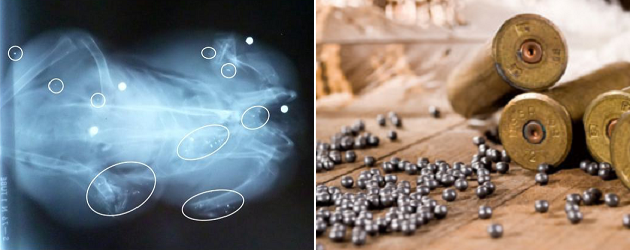The aim of this project was to identify high level consumers who eat large amounts of lead-shot wild-game meat in Scotland and to investigate consumption habits and behaviours of these consumers.
 |
| [relatedPosts title=”Related Posts”] |
|
|
Background
The European Food Safety Authority (EFSA) opinion on lead in food identified high-level consumers of game meat and game offal as consumer groups with higher exposure to lead.
There is no information regarding which groups, other than those engaged in game management, may be involved in consumption of large quantities of lead-shot meat.
There was also a lack of information regarding the typical practices employed to prepare wild-game meat for consumption, such as: how the wild-game meat is obtained, which game is eaten in highest quantities, how the meat is dressed, what common cooking and preparation techniques are involved. Practices such as dressing, marinating and cooking in vinegar (or other acidic conditions) can affect the levels of lead available for consumption.
Research Approach
The objectives were to:
- establish who are high-level consumers of lead-shot wild-game meat
- determine what practises are used in preparation and cooking of lead-shot wild-game meat
- explore habits and behaviours relating to consumption of this type of meat
A mix of qualitative and quantitative interviews were used in the research. The qualitative research phase included interviews with experts in the field of wild-game meat preparation and lead- shot removal (consultant chef, game dealer, gun expert, stalker, shooting party organiser and veterinary surgeon) and in-depth interviews with domestic and commercial respondents involved in wild-game preparation (i.e. butchers, game dealer, shooters, game-keeper) about preparation and consumption. The quantitative research phase consisted of 200 semi-structured telephone interviews with high-level consumers of lead-shot wild-game meat.
Results and findings
This research has shown that half of the respondents (51%) eat lead-shot game at least once a week during the main shooting season, and a fifth of participants (21%) consume lead-shot game at least once a week out of the main shooting season.
The majority of respondents (85%) considered wild-game meat to be suitable and safe for all members of the household to eat, including children and the elderly, however, the levels of consumption were lower for children under 5 years old and adults between 65 and 74 (23 and 18% decrease, respectively).
The majority of respondents (66%) felt that the size of the wild-game meat portion should be consistent with that of other meat, such as chicken, pork or beef, while some (25%) believed that wild-game meat portions should be slightly smaller. Generally, respondents indicated that effort is made to remove as much of the visible particles of lead-shot as possible from meat prior to preparation or cooking.
Venison is the wild-game meat of choice for those eating out (94%), with pan-frying the preferred method of cooking (67%). The greatest variety of cooking methods is used in preparation of pheasant (pan-frying, roasting, casseroling, stewing, smoking, salting, curing, boiling, cooking in sous-vidé, as part of pie, a pâté or a terrine).
Respondents considered it normal to hang, store or freeze wild-game meat before any preparation, such as plucking or skinning (80%). It is also common to freeze meet following preparation before and/or after cooking (70%). Freezing of wild-game meat for longer periods of time, i.e. up to six months or longer, ensures availability of meat throughout the year, even outside the normal shooting period.
Lead shot is not often found in wild-game meat, with the majority of respondents stating that they find a piece of lead shot only occasionally (28-30%), rarely (33-35%) or never (14-22%).
Overall, the project has provided valuable data on habits and behaviours of high-level consumers of lead-shot wild-game meat. This data has been used to assess whether levels of consumptions of lead-shot wild-game meat are likely to pose risk to consumers, due to exposure to lead, and to develop targeted advice.





